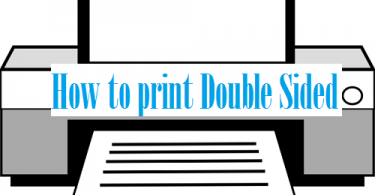A virtual machine is a software that acts as a separate computer. It allows for the same kind of functionality, or, in the case of installing a different OS, goes even beyond. Whether you want to access potentially malicious files, websites, or experiment with a different environment, a virtual machine is a solution. This article will cover:
- What is a virtual machine
- How you can benefit from it
- A step-by-step guide on how to install a virtual machine
- The main functions of using a VM
- Frequently asked questions about the subject
Without any further ado, let’s delve right into it.
What is a Virtual Machine?
A virtual machine (or VM for short) is a virtual operating system that’s powered by the resources of your hardware. It’s up to you how much RAM and disk space you decide to allocate to it. It appears as another window on your desktop, the kind you can switch to on-demand. In all aspects imaginable, it behaves as a regular computer would.
The only drawback is that video games and resource-heavy applications don’t work as well when running inside of it. But otherwise, it’s a powerful tool in your arsenal. If your hardware packs some muscle, nothing is stopping you from running two VMs at the same time (or more).
Why Do People Use Virtual Machines?
A VM is more than just a geeky hobby. For example, now that Windows 7 has reached an end of its support cycle, many business owners are looking beyond upgrading to Windows 10 and looking at alternatives. If you don’t have a spare PC lying around, it’s hard to test out a completely new OS… unless, of course, you install it in a virtual machine.
If you’re no stranger to cybersecurity, you may come across a suspicious-looking file you’d like to inspect without putting your primary system in danger. Since a VM runs “in a bubble,” it’s suitable for the purpose. You won’t have to worry about potential malware finding its way through.
Last but not least, some companies use specific apps for business purposes. They might experience compatibility issues when upgrading to a newer OS. With a VM, there is no need to stick with an outdated OS only for the sake of being able to run them. Thus, you get the best of both worlds.
How to Setup a Virtual Machine?
Installing an operating system from scratch can be pretty demanding. But the process of setting up a VM is more comfortable since there’s no need to worry about messing something up. In case you do, you can always delete the VM and create a new one.
Since there are many VM apps out there, one article can’t cover them all. This time, the focus will be on VirtualBox – an industry-grade solution you can install for free.
The exact installation process depends on the OS you’re using, but that’s nothing a simple Google search won’t take care of.
Step 1: Install VirtualBox (only need to do it once).
Step 2: Click “New” at the top of the window.
Step 3: Name the OS you’d like to install and choose the type.
Step 4: Allocate the memory/RAM size (as a first-time user, it’s fine to go with the defaults).
Step 5: Choose between a fixed and dynamically-allocated disk size (the latter will expand on a per-need basis).
Step 6: Choose the disk space size.
Step 7: Click “Create,” and you’re done!
Step 8: Before hitting “Start” for the first time, make sure to have the OS installation media ready (or an .iso file resting on your local hard drive). Download it from official resources if you haven’t already.
Step 9: Launch the new VM by hitting “Start.” If you haven’t gone through the installation phase yet, this is where you’ll install the new OS inside the VM. The exact process depends on the type of OS you want to install.
That’s pretty much it.
A Quick Recap of The Main Functions of VMs
- A safe environment to visit unknown websites or open suspicious files.
- It allows testing another operating system without altering your main one.
- It runs apps not supported by your primary OS.
- It allows using outdated apps for compatibility purposes without worries of introducing a cybersecurity risk.
- It runs two (or more) different operating systems on the same machine.
FAQs
Will a Virtual Machine Keep Your PC Safe from Cyber-Threats?
It will shield you from infection, provided that you get infected inside the VM. Still, you should use a virtual private network to protect data in transfer/internet connection, since it won’t secure it on its own. For instance, NordLayer Teams is a fantastic VPN software for work-related purposes, whether you run it inside the VM or the main OS.
Do You Have To Be Tech-Savvy to Use It?
Using the right tools (such as VirtualBox) and following the instructions carefully, even complete beginners can learn to use a VM in as little as a few hours.
Is a VM Legal?
100% legal! But do make sure you have a legitimate license for whatever operating system you’re installing inside of it. In case you’re installing Linux, don’t worry about this, since it’s free to use even for commercial purposes.
Conclusion
A VM solves so many headaches it deserves a spot on your machine. Once you’re used to how it works, it’ll become a staple in your digital toolbox.







yet to have a vm you need a pretty good computer unless you are doing something like going through Facebook or youtube. Yet to do something more power-consuming, I would just suggest getting a VPN as you’ve suggested NordVPN